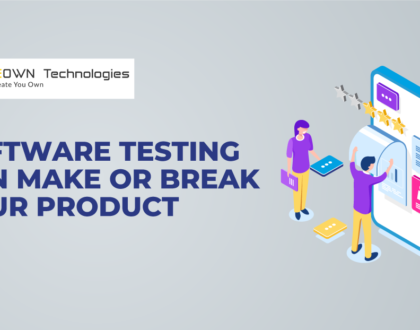What is Software Testing and its Types

by Nitin Patel
Software testing is the procedure of finding out the exactness and worth of software program. The main focus behind it is to check whether the software pleases the precise requirements, needs and prospect of the customer or not. In other words, we can say that testing is implementing a system or application in order to detect the software bugs, faults or errors. The purpose behind testing is to know the exact reasons for application failures so that they can be corrected keeping in concern the specifications. For example: The car manufacturer tests the car for highest speed, fuel competence and safety from the crash. This test, later on, becomes the part of promising approaches for car sales.
A number of reasons are behind the defects of the software. There may be an error by the developer which may have resulted in a defect or bug in the software source code. Any defect or bug in the software will create incorrect results which can result in failure. When a bug or defect results in a software application, testing is done to know the cause of the defect and how to eliminate the bug. Also, if a part of software builds up a bug, it has to be corrected so that it does not disturb the whole procedure of software program. That corrected part is, yet again, tested to make sure that it is similar in temperament to the rest of the program.
Different types of software testing
#1. Unit Testing
It is the testing of an individual unit or group of related units. It falls under the category of white box testing. This testing is often done by the programmer to find out the unit which is producing expected output against given input.
#2. Integration Testing
This is a testing in which a group of components are clubbed together to produce output. Also, the interface between software and hardware is tested in amalgamation testing if software and hardware components have any kind of link. It may fall under both white box testing and black box testing.
#3. Functional Testing
This testing is done to ensure that the specified functionality, required in the system, works. It falls under the class of black box testing.
#4. Performance Testing
This testing is done to assess the speed and effectiveness of the system and to make sure it is giving results within a specified time. It falls under the class of black box testing.
#5. Usability Testing
Usability testing is carried out to the perception of the client, to estimate how user-friendly is the GUI? How easily can the client learn? After knowing how to use, how competently can the client perform? How pleasing is it to use its design? This falls under the category of black box testing.
#6. Acceptance Testing
Acceptance testing is often done by the consumer to make sure that the end product meets the requirements and works as the consumer expected it to. It falls under the class of black box testing.
#7. Regression Testing
After the modification of a system, component, or a group of related units, regression testing is done to ensure that the modification is working properly and is not harmful or striking other modules to give unexpected results. It falls under the class of black box testing.
#8. Beta Testing
This testing is carried out by end users, a team outside development, or publicly releasing full pre-version of the product which is called as a beta version. The main focus of beta testing is to cover unexpected errors. It falls under the class of black box testing.
Conclusion:
To find the worth of software, it is essential that it undergoes testing. There are different types of software testing which are available for the people to choose as per their specifications.
Recommended Posts

Outstanding Open Source Development for Captivating Customers
November 13, 2019

CreOwn Technologies Does It Again
October 21, 2019

Software Testing Can Make or Break your Product – Here’s how!
September 17, 2019


